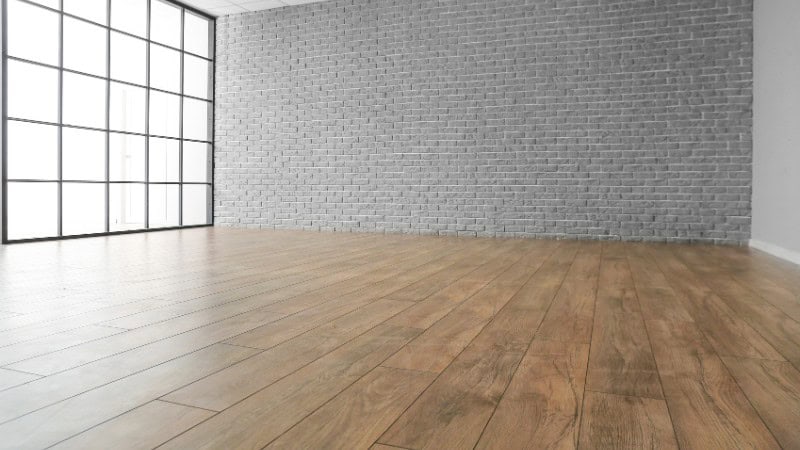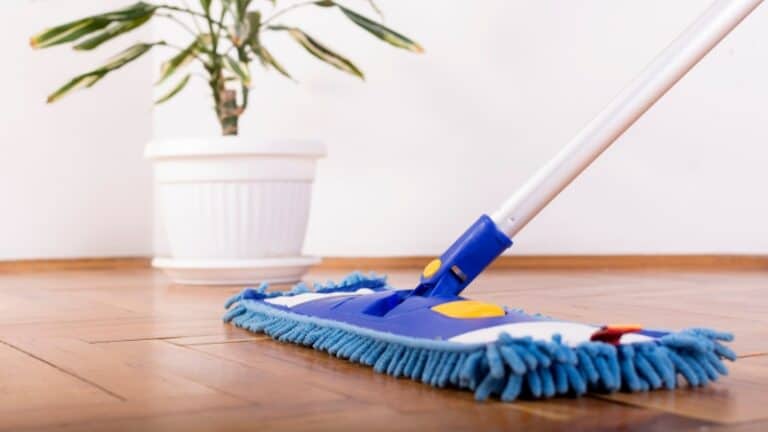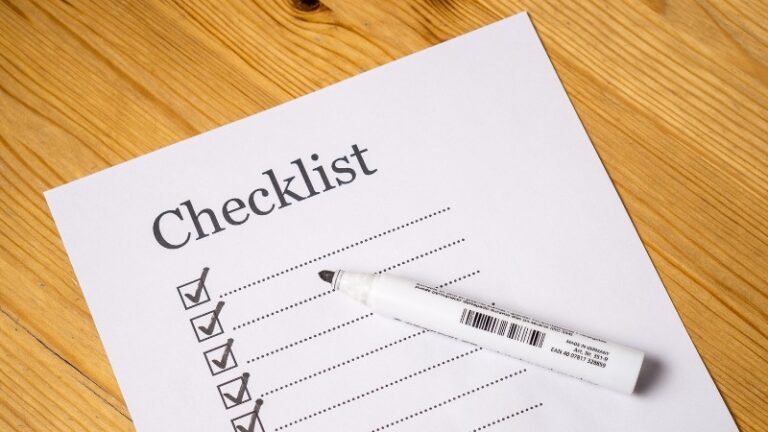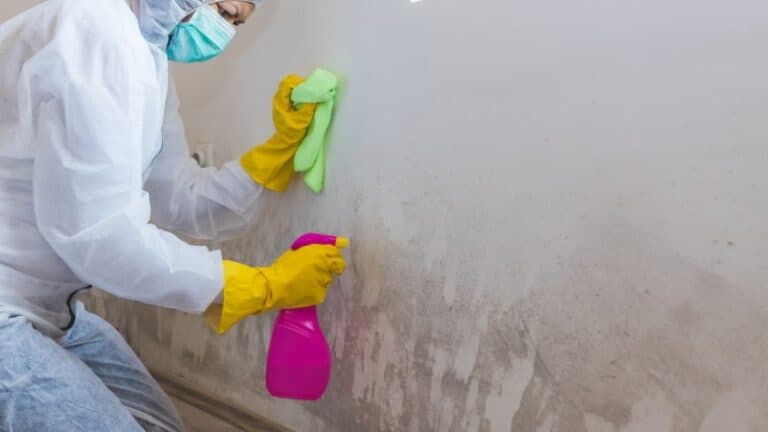Laminate floors might look like real wood, but they play by their own rules. Sleek, durable, and wallet-friendly, they’ve earned their spot in countless homes. But while they may look like hardwood, you can’t treat them the same way especially when it’s time for a serious scrub.
The truth is, deep cleaning laminate floors takes more than just a quick mop and prayer. One wrong move (hello, standing water!) and you’re dealing with warping, peeling edges, or a cloudy top layer that just won’t quit.
So how do you deep clean laminate without damaging that protective coating or losing your shine? That’s exactly what we’re getting into along with what to avoid and how to keep those floors looking fresh for years.
Stick around if you want spotless results without the guesswork. Things are about to get clean without the chaos.
Content
Understanding Laminate Flooring and Why Deep Cleaning Matters
Think your laminate floors are low-maintenance? They are but only to a point.
While they don’t need constant polishing like traditional wood floors, they do demand care that goes beyond the occasional sweep.
Beneath that smooth surface lies a layered structure made from compressed fiberboard, finished with a high-res photo of wood and sealed with a clear protective coat. That top layer is what gives laminate its signature look and what needs to be protected from damage.
What many homeowners miss is how moisture quietly becomes the enemy.
Even a splash from a wet mop can sneak into the seams and cause swelling. If you’ve ever seen warped planks or buckling edges, there’s a good chance excess water played a role.
Regular sweeping helps with loose dirt, but over time, grime builds up in the textured areas and joints. That’s when your floors start to lose their luster. Deep cleaning laminate isn’t about scrubbing harder—it’s about doing it smarter to preserve the protective layer without risking damage.
And here’s something most people overlook: improper techniques like steam mopping or over-wetting can void your floor’s warranty. A few drops too many and you’re suddenly replacing planks instead of just cleaning them.
Keeping your laminate floor looking its best means going beyond surface cleaning.
A smart deep cleaning routine not only restores shine but also extends your floor’s lifespan and saves you from costly mistakes.
Step-by-Step Guide: How to Deep Clean Laminate Floors Safely
Laminate may look smooth and spotless at a glance, but don’t let that fool you.
Before you even think about reaching for a mop, the first step is all about clearing away what your eyes don’t catch like fine dust, pet hair, and gritty debris hiding between planks.
Step 1: Dry Sweep or Vacuum Thoroughly

Start with a full sweep or vacuum of your laminate floors. This isn’t just about picking up visible crumbs. Dirt, pet hair, and fine debris collect in the seams and along the grain, and if you skip this step, you risk grinding that grit into the surface during mopping.
A dry microfiber mop is your best friend here. It glides easily, traps loose dirt, and won’t leave scratches behind.
Prefer a more traditional approach? A soft bristle broom does the trick just as well—just make sure to sweep in the direction of the planks so nothing gets missed.
If you’re using a vacuum cleaner, double-check that the beater brush is turned off or use a hard floor setting. Rotating brushes are great for carpets, but on laminate, they can scuff the protective layer faster than you think.
This small adjustment makes a big difference in keeping your floors scratch resistant and looking their best.
Step 2: Choose the Right Cleaning Solution

Once your floor is free of dust and loose debris, it’s time to move on to the part that can either make your laminate shine or strip away its charm.
The cleaning solution you choose matters more than most people realize.
Laminate floors aren’t built to handle harsh cleaners or soaking formulas. That means no bleach, no ammonia, and definitely no oil based cleaners. These products might leave your floor looking clean at first, but over time, they eat away at the protective layer, causing dullness or permanent damage.
Your safest bet?
A laminate-specific or pH-neutral laminate floor cleaner. These are formulated to clean without disrupting the surface seal. If you’re more into DIY, you’re not out of options.
A simple and safe mix includes a few drops of liquid dish detergent in a gallon of warm water.
Want to go the vinegar route? Mix one part white vinegar with ten parts water for a streak-free finish but don’t make this a habit. Even diluted vinegar, when overused, can erode that top protective coating.
The goal is to clean laminate, not punish it. Choose your solution wisely, and your floors will thank you with a lasting shine.
Step 3: Damp Mop, Don’t Wet Mop

This is where many well-meaning floor cleaners go off track. You’ve picked the perfect solution, but now comes the real test—how much water is too much?
With laminate flooring, the answer is almost always: less than you think.
Instead of soaking your floors with a wet mop, stick with a lightly dampened microfiber mop. Think barely moist not dripping. Laminate floors aren’t waterproof, and even small amounts of standing water can sneak into the seams and cause bubbling or warping.
It’s not just a bad look but also expensive to fix.
Work in small sections and follow the direction of the grain.
This helps reduce streaks and ensures that the damp cloth doesn’t leave behind a residue. Keep rinsing your mop in the cleaning solution as you go, but always wring it out well before returning to the floor.
As you finish each section, wipe it dry immediately with a clean, dry microfiber cloth or towel.
This extra step might feel tedious, but it’s worth it. In fact, flooring manufacturers say that over half of laminate floor damage comes from improper mopping and moisture exposure.
Step 4: Spot-Clean Tough Stains
Even the cleanest homes deal with the occasional mystery stain or sticky surprise.
Whether it’s dried juice under the dining table or scuff marks near the entryway, not every mess needs a full mop, sometimes targeted cleaning is all you need.
Start with a simple approach: use a damp cloth and a laminate-safe cleaner to treat stains like scuffs, crumbs fused into the floor, or dried spills. Don’t oversaturate the cloth, moisture control still matters.
Grease or sticky spots? Add a few drops of dish soap to your cloth and gently scrub the area. Rinse with a fresh, slightly damp cloth afterward to avoid leaving a film behind.
For those extra stubborn marks—think crayon art or shoe scuffs—a dab of acetone-based nail polish remover on a cotton pad can be surprisingly effective. Just make sure to test it first in a hidden corner of the room to avoid any surprises.
You can also sprinkle a little baking soda on a damp cloth and gently scrub in small circles. It’s abrasive enough to lift stains without scratching the protective layer and perfect for deep cleaning laminate without damage.
The trick is knowing when to treat stains individually rather than reaching for the mop. A few minutes of spot cleaning can keep your entire floor looking fresh without the risk of overdoing it.
Step 5: Buff to Restore Shine
After all that careful cleaning, don’t stop short of the finish line. This last step is what takes your laminate floors from clean to truly polished.
Once your floor is fully dry, grab a dry microfiber cloth or a dry microfiber mop and give the surface a gentle buff. This isn’t just for show as buffing removes any leftover streaks or residue from your cleaning solution and helps bring back that smooth, natural finish laminate floors are known for.
As you buff, take a moment to scan the room for any missed spots or dull patches. A bit of dried residue or a tiny smudge might still be hiding in plain sight.
If you find one, simply treat it with a damp cloth and dry it off again before finishing your buff.
It’s a small step, but one that makes a big visual impact.
Buffing adds that final touch like fluffing a pillow after making the bed. It’s how you get floors that don’t just look clean, but feel brand new.
5 Preventive Tips to Keep Laminate Floors Clean Longer
Deep cleaning is great but wouldn’t it be better if your laminate floors stayed cleaner in the first place?
With a few smart habits, you can stretch the time between those intensive cleaning days and keep your floors looking fresh every day.
1. Use Mats at Entrances

One of the easiest ways to protect your laminate floors is to stop dirt at the door. Placing mats at every entrance creates a first line of defense against grit, moisture, and other debris that can sneak in on shoes.
It’s a simple fix, but one that can dramatically reduce the amount of loose dirt that collects on your hard floor surfaces.
Go a step further by adding area rugs or runners in high-traffic zones like hallways, entryways, and kitchen walkways. These spots tend to collect the most crumbs, pet hair, and foot traffic, making them prime candidates for dirt buildup.
Rugs not only help keep the floor clean but also reduce wear and tear over time. Just be sure to use rugs with non-slip felt pads that are safe for laminate and won’t leave behind a sticky residue.
2. Wipe Spills Immediately
It’s easy to think, “I’ll get to that spill in a minute.” But on laminate floors, a minute can turn into moisture damage fast.
Unlike tile or stone, laminate doesn’t handle standing water well because liquid can seep into the seams, swell the boards, and leave behind a warped, uneven mess.
The moment something hits the floor, reach for a paper towel, dry microfiber cloth, or a damp cloth followed by a dry one. Even a few drops of water near the edges of planks can do long-term damage if ignored.
To make cleanup even easier, consider investing in a laminate floor mop designed to avoid excess water. These are lightweight, easy to wring out, and ideal for quick wipe-downs.
And while you’re at it, encouraging a no-shoes rule indoors is another easy win. Shoes bring in everything from sand and grit to tiny pebbles all of which can dull the protective layer and shorten the lifespan of your floors.
3. Avoid Steam Cleaners
It might be tempting to pull out the steam mop for a quick deep clean after all, it feels efficient. But when it comes to laminate floors, steam is more foe than friend.
The intense heat and moisture from steam cleaners can force water deep into the seams, breaking down the protective layer and eventually causing bubbling, peeling, or warping.
Even if the floor looks fine right after, the damage often shows up weeks later. That’s why manufacturers specifically warn against using steam mops on laminate wood flooring.
Your best bet is to stick with a lightly damp microfiber mop and a safe cleaning solution. It’s just as effective at lifting grime without putting your floors at risk.
When in doubt, remember: laminate loves dry and dislikes drama especially in the form of heat and steam.
4. Add Pads to Furniture Legs

You don’t have to drag a sofa across the room to leave a mark—sometimes, just sliding a dining chair back a few inches is enough to scuff the surface.
Over time, these tiny scratches add up, leaving your laminate looking dull and worn in all the wrong places.
To keep your floors looking polished, apply soft felt pads or gliders under the legs of all your furniture. This includes dining chairs, coffee tables, and even those decorative accent pieces you rarely move.
These pads act like little shock absorbers, allowing furniture to glide without scraping the protective layer of your laminate floor.
And don’t forget to check the pads regularly.
They wear down with use and can collect grit, which defeats their purpose. Replacing them every few months is a small task that goes a long way toward preserving your floor’s smooth finish.
5. Vacuum or Dust Mop Weekly
Even if your floors look clean, don’t be fooled as dirt has a sneaky way of building up in corners and along seams. And the longer it sits, the more likely it is to scratch that top protective layer.
That’s why weekly upkeep isn’t just helpful—it’s essential.
Use a dry microfiber mop or a vacuum cleaner with a hard floor setting to collect dirt, crumbs, and other debris. If you have pets, attachments made for picking up pet hair can make a noticeable difference and prevent hair from matting along the floor’s edges.
Consistency here keeps things simple. By staying ahead of dirt buildup, you reduce the need for frequent deep cleaning and your laminate keeps its shine longer with far less effort. Think of it as a five-minute habit with long-term payoff.
Leave It to the Pros – Schedule a Laminate-Safe Deep Clean with Modern Maids
You’ve seen how much care laminate floors really need. From dodging standing water to choosing the right mop and mastering the art of “just damp enough,” cleaning these floors isn’t exactly a grab-and-go task. And let’s be honest—between work, errands, and keeping up with the rest of your home, who has time to play floor doctor?
That’s where Modern Maids comes in. Our team uses laminate-safe tools, moisture-controlled methods, and cleaning solutions that won’t mess with your floor’s protective layer. No streaks, no swelling, no mystery products—just a professionally deep cleaned floor that still looks brand new next month.
Whether you’re dealing with pet hair battles or you just want to preserve that showroom shine, we’ve got your back (and your floors).
Want spotless laminate floors without risking damage?
Let the experts at Modern Maids deep clean your floors the right way.
Call (469)-430-8860 or book a service online today for professional care your floors will thank you for!
FAQs
Why is my laminate floor still dirty after mopping?
If your laminate floor still feels sticky or looks dull after mopping, it’s likely due to leftover residue from using the wrong cleaning solution or too much water. Laminate floors need a moisture-controlled approach—using a damp mop instead of a wet one. Harsh cleaners or soap-based products can also leave behind a film that attracts more dirt. For best results, use a laminate floor cleaner or a few drops of liquid dish detergent in warm water, and always dry the floor with a clean microfiber cloth after mopping.
What should you not clean laminate floors with?
Avoid cleaning laminate floors with abrasive cleaners, bleach, ammonia, steam cleaners, or any product that leaves excess moisture behind. These options can strip the protective coating, cause discoloration, or even lead to swelling in the laminate wood flooring. Harsh chemicals and too much water are a laminate floor’s worst enemies. Stick with a pH-neutral cleaning solution, a microfiber mop, and light pressure to keep your floors looking clean and damage-free.
Does vinegar damage laminate floors?
Vinegar can be helpful in small doses, but using it regularly or in high concentration can wear down the protective layer of your laminate flooring. While a solution of one part white vinegar to ten parts warm water is generally safe for occasional use, it’s not recommended for frequent cleaning. Over time, vinegar’s acidity can dull the finish and weaken the protective coating. If you want to play it safe, opt for a laminate-specific floor cleaner or a mild DIY solution with a few drops of dish soap instead.







